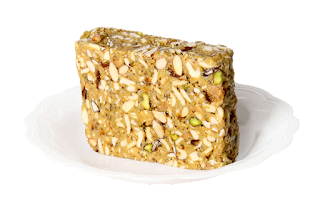Amingad's Karadant: The Sweet Legacy of North Karnataka
Karadantu: The Sweet Essence of North Karnataka**
The culinary landscape of India is a treasure trove of sweets and desserts, each region offering its unique and delectable creations. In the northern region of Karnataka, there exists a sweet that encapsulates the rich flavors and traditions of the area - Karadantu. In this comprehensive exploration, we will delve into the world of Karadantu, uncover the charm of dry Indian sweets, discover the fame of this delicacy in North Karnataka, and uncover the story of Amingad's Karadant.
Karadantu: A Sweet Tradition
Karadantu, a popular dessert in North Karnataka, derives its name from the Kannada words "kara" meaning spicy or tangy and "dantu" meaning gum. This sweet treat is renowned for its unique combination of sweetness and spice, making it a delightful fusion of flavors.
Ingredients: Karadantu is primarily crafted from edible gum, dry fruits, jaggery (unrefined cane sugar), and ghee (clarified butter). These ingredients are carefully blended to create a chewy and nutty confection.
Preparation:The process of making Karadantu involves roasting edible gum, which puffs up like popcorn, creating a unique texture. This puffed gum is then combined with chopped dry fruits and mixed with melted jaggery and ghee. The mixture is shaped into blocks or rolls, cut into bite-sized pieces, and allowed to cool and set.
Flavor Profile:Karadantu strikes a harmonious balance between sweetness and spiciness. The natural sweetness of jaggery combines with the rich, nutty flavors of dry fruits and the earthy aroma of edible gum. A touch of spice adds complexity to the taste, making it a truly distinctive treat.
Nutritional Benefits:Karadantu is not just a sweet indulgence; it also offers nutritional benefits. Edible gum is a good source of protein and provides energy, while dry fruits contribute essential vitamins and minerals. Jaggery, a natural sweetener, contains iron and aids digestion.
Dry Indian Sweets: A Culinary Legacy
Dry Indian sweets, also known as mithai, are a diverse and beloved category of desserts found throughout India. These sweets are cherished for their unique textures, flavors, and cultural significance. Dry Indian sweets are typically made with ingredients like milk solids (khoya), ghee, sugar, and a variety of nuts and spices.
Variety: India boasts a rich tapestry of dry Indian sweets, each with its distinct characteristics. Some well-known examples include Barfi, a fudgy milk-based sweet often flavored with cardamom or rosewater; Laddu, round sweet balls made from gram flour or semolina; and Soan Papdi, a flaky, melt-in-the-mouth confection.
Occasions: Dry Indian sweets play a significant role in Indian culture and are central to various celebrations and festivals. They are exchanged during weddings, births, festivals like Diwali, and other auspicious occasions as a symbol of joy and good fortune.
Regionality: Different regions of India have their own signature dry sweets, showcasing the diversity of flavors and techniques. For example, Bengali sweets like Rasgulla and Sandesh are known for their milk-based delicacies, while South India is famous for sweets like Mysore Pak and Pootharekulu.
North Karnataka's Sweet Secret: Karadantu
North Karnataka, often overlooked in the culinary map of India, is home to a hidden gem - Karadantu. This sweet treat has been a cherished part of the region's culinary heritage for generations. What makes Karadantu unique is not only its distinctive taste but also the role it plays in the cultural fabric of North Karnataka.
Cultural Significance:Karadantu is not just a sweet but a symbol of togetherness and celebration in North Karnataka. It is traditionally prepared during festivals famous sweet in Northkarnataka, weddings, and special occasions, where it is exchanged as a gesture of love and goodwill.
Local Ingredients:The use of locally sourced ingredients like jaggery and dry fruits reflects the region's agrarian traditions. Jaggery is often produced in rural areas of North Karnataka, contributing to the local economy.
Craftsmanship: Making Karadantu is not just a culinary art; it's a craftsmanship passed down through generations. Families and communities take pride in preserving the traditional techniques and flavors of Karadantu.
Amingad's Karadant: A Legacy of Sweetness
In the heart of North Karnataka lies a small town with a big reputation for producing some of the finest Karadantu - Amingad. Amingad's Karadant has gained fame not only for its exceptional taste but also for the dedication of the artisans who craft it.
Artisanal Craftsmanship: Amingad is home to skilled artisans who have honed the craft of making Karadant over generations. They follow traditional recipes and techniques, ensuring that each bite of Karadant encapsulates the authentic flavors of North Karnataka.
Quality Ingredients:Amingad's Karadant is made using high-quality ingredients sourced locally. The jaggery used in its preparation is renowned for its superior taste and texture, and the dry fruits are carefully selected to enhance the overall richness of the sweet.
 |
| amingad kardant |


Comments
Post a Comment